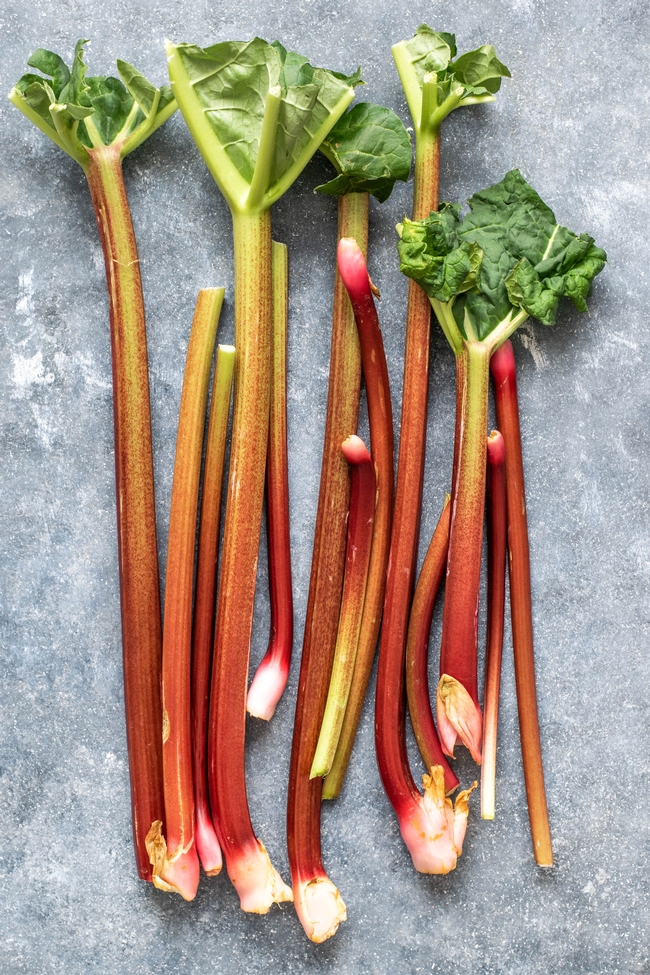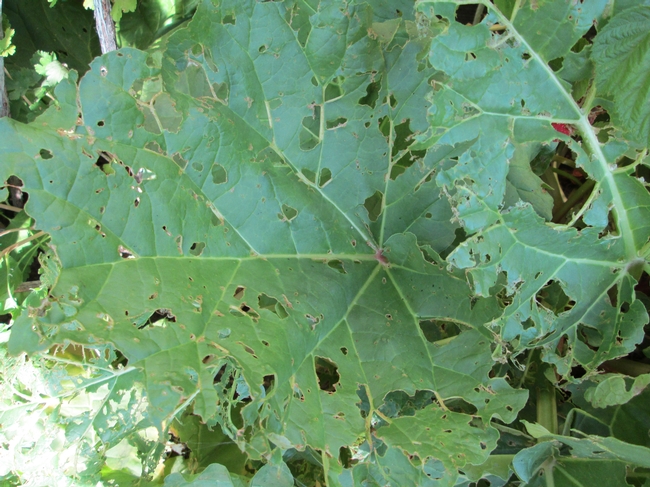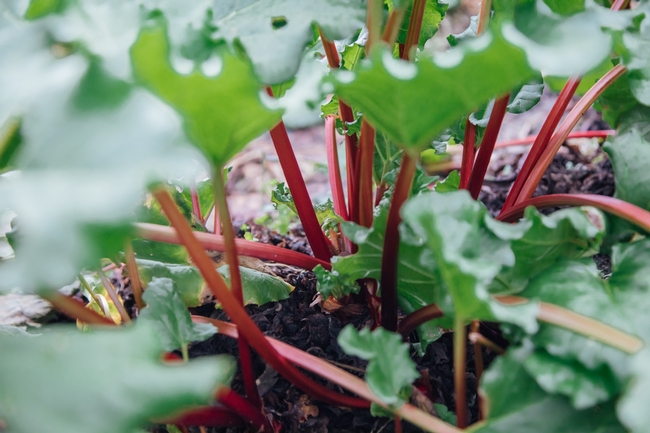The herbal qualities of rhubarb (Rheum rhaponticum) have been treasured in China for thousands of years, its export to the outside world often being forbidden. The type which we now eat originated in Russia, and reached America by way of Europe in the 1770s. It is grown primarily for its succulent stems which can be made into various desserts and preserves. (What we usually call stems on rhubarb are actually petioles – a “leaf's stem”). The leaves, however, contain high quantities of oxalic acid and are very toxic. Stems can be harvested as early as April in the Owens Valley, long before any fruits are ready, and in many countries plants are “forced” to obtain an even earlier crop. Large terracotta forcing pots were part of my childhood scene in England, although one seldom sees them now. I have not found anyone who has tried forcing in our area.
As with so many plants from temperate climates, rhubarb is on the edge of its range in the high desert but with afternoon shade and sufficient water it can do well. Responses from Master Gardeners in the area show that either they cannot get it going or else they cannot get rid of it! Unfortunately the names of the varieties that various people have tried have been lost in the mists of time, but the three Master Gardeners who failed were trying to grow red stemmed varieties which are considered less heat tolerant.
I grow a very robust green, slightly red-tinged variety, which I believe to be 'Victoria', given to me (and many others) by a gardener in Bishop. The mother plant has been producing and spreading for many years, and mine has shown no signs of weakening after three years, although plants on a south-facing wall under dappled shade grow flatter and are much less productive than one planted against an east-facing fence. Another recipient of the same stock planted hers on a shaded west-facing fence about 8 feet away from a stream with no additional irrigation and has an enormous plant. One person has it planted on the north side of her house and finds that it grows well there.
Master Gardener Bobbie Stryeffeler has a prolific red-stemmed variety the leaves of which have red veins. Red varieties commonly found in nurseries include 'MacDonald' and 'Crimson Cherry' which is grown in other areas of California, and is one of the best since the red coloring goes right through the stem and does not cook out. Although there is supposedly no difference in sweetness between the red and green stemmed varieties, the red stemmed ones definitely make more attractive-looking jams and pies.
The large, bold plants can be quite handsome and many gardeners consider them ideal for incorporating into an edible landscape. Allow about one square yard per plant. Rhubarb takes a couple of years to become established, but then needs dividing only every 5 – 10 years, so it is necessary to prepare the soil very well - digging deeply, removing all perennial weeds, and adding a generous amount of rotted manure or compost. Plenty of moisture – preferably by drip irrigation - and protection from the sun during the hottest part of the day are requirements, and although quite hardy they benefit from a covering of mulch during the winter. They have a long, thick, woody rootstock at the top of which are “eyes” or buds which give rise to many petioles, each topped with a large leaf blade. Plant in early spring placing the eyes so that they are covered with about 2'' of soil. A winter chill below 40°F is required to induce rapid growth in the spring and early summer which continues until the temperatures reach above 75°F at which point the plants become dormant until cut down by the first severe frost. Plants should be mulched annually with well-rotted compost or manure, or else fertilized with a 10-10-10 formula.

Do not harvest any stems the first year, and in the second year harvest only lightly. After that full harvesting can begin, but never pull more that 30%-50% of the stems to ensure you leave enough leaves to feed the plant. The younger stems are most flavorful and tender. Pull the stems from the base of the plant with a slight sideways motion – do not cut them as this leaves a stub that may rot. Many experts recommend removing the leaves immediately. The harvested petioles can be used fresh, or frozen, or preserved for future use.
The leaves may be safely composted. Flower spikes appear as a large sheath-covered bud at the base of the plant and should be removed as soon as they become apparent since they deplete the plant's reserves, although in some countries the flowers are said to be dipped in batter and fried. The green-stemmed varieties tend to bolt more than those with red-stems.

A word of warning: The leaves contain very high, toxic levels of oxalates and anthraquinone glycosides. However, the stems also contain lesser amounts and excess oxalic acid is excreted by the kidneys. It can combine with calcium to form calcium oxalate. Excess crystals of this compound lead to the formation of bladder or kidney stones, so people suffering from these conditions, as well as those with kidney disease or gout should avoid eating rhubarb.
Just thinking of rhubarb takes me back to my childhood. Candy was rationed, so a special treat was to be given a little cone of paper containing sugar, and a tender rhubarb stem for dipping. There are whole cook-books devoted entirely to rhubarb recipes so if you are successful in growing this plant it should be easy to find something to do with it!
